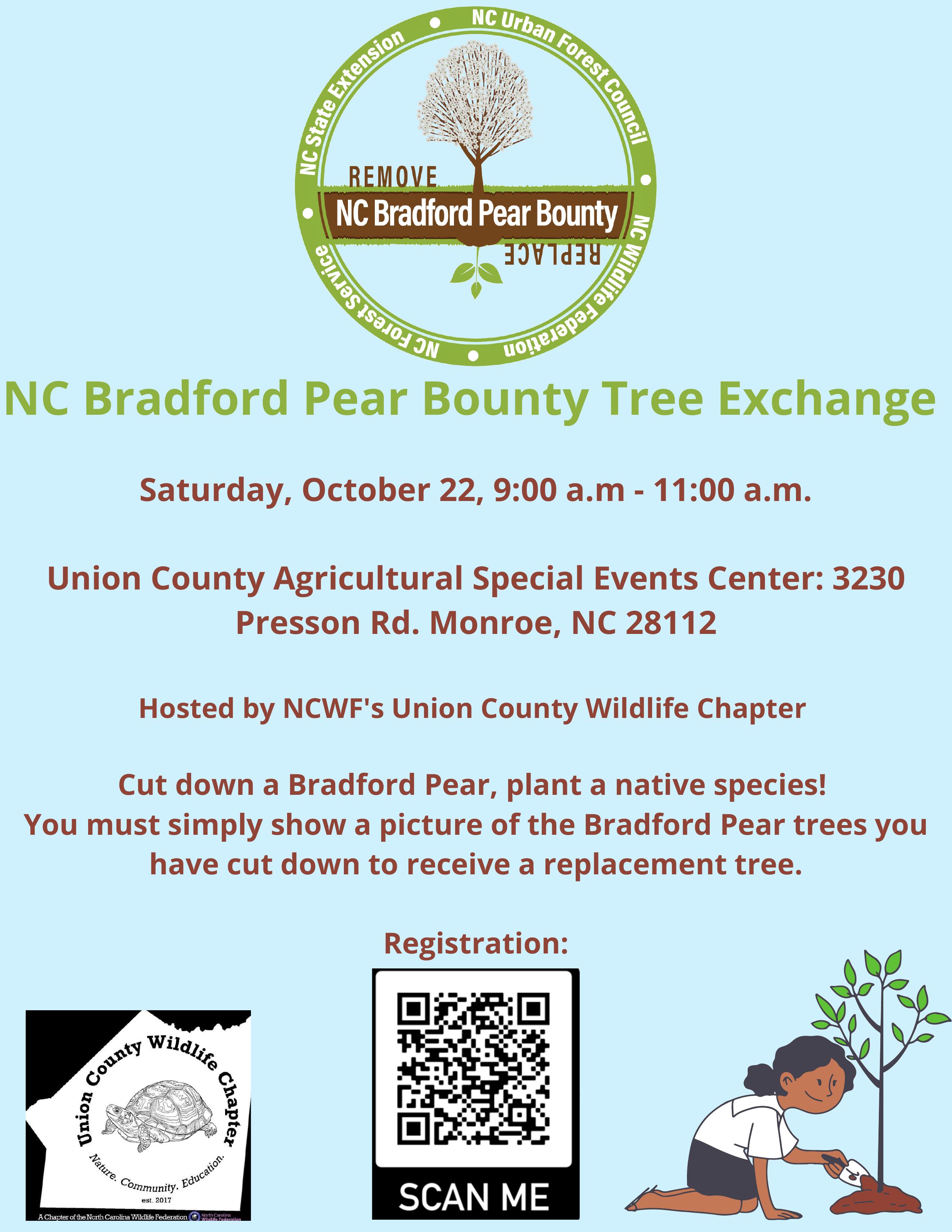Bradford Pear Exchange
go.ncsu.edu/readext?883626
en Español / em Português
El inglés es el idioma de control de esta página. En la medida en que haya algún conflicto entre la traducción al inglés y la traducción, el inglés prevalece.
Al hacer clic en el enlace de traducción se activa un servicio de traducción gratuito para convertir la página al español. Al igual que con cualquier traducción por Internet, la conversión no es sensible al contexto y puede que no traduzca el texto en su significado original. NC State Extension no garantiza la exactitud del texto traducido. Por favor, tenga en cuenta que algunas aplicaciones y/o servicios pueden no funcionar como se espera cuando se traducen.
Português
Inglês é o idioma de controle desta página. Na medida que haja algum conflito entre o texto original em Inglês e a tradução, o Inglês prevalece.
Ao clicar no link de tradução, um serviço gratuito de tradução será ativado para converter a página para o Português. Como em qualquer tradução pela internet, a conversão não é sensivel ao contexto e pode não ocorrer a tradução para o significado orginal. O serviço de Extensão da Carolina do Norte (NC State Extension) não garante a exatidão do texto traduzido. Por favor, observe que algumas funções ou serviços podem não funcionar como esperado após a tradução.
English
English is the controlling language of this page. To the extent there is any conflict between the English text and the translation, English controls.
Clicking on the translation link activates a free translation service to convert the page to Spanish. As with any Internet translation, the conversion is not context-sensitive and may not translate the text to its original meaning. NC State Extension does not guarantee the accuracy of the translated text. Please note that some applications and/or services may not function as expected when translated.
Collapse ▲The Bradford Pear became a popular ornamental plant for homeowners as it produces beautiful white flowers in the spring. However, while the Bradford Pear looks idyllic, the tree emits a foul odor. Due to their ability to reproduce with other varieties of pear trees, the Bradford Pear has been able to move into natural forests and replace the native plants that once lived in these areas. The Union County Wildlife Chapter aims to remove the invasive Bradford Pear trees and replace them with native tree species.
On October 22nd, Union County Wildlife Chapter will host the first Bradford Pear Exchange for Union County. The goal of the exchange is to combat the spread of this species and boost native tree populations. With assistance from the Extension Master Gardener℠ Volunteers of Union County and the North Carolina Wildlife Federation, the UC Wildlife Chapter has been able to purchase 250 trees of six different species (Serviceberry, American Hornbeam, Sweetbay Magnolia, Red Mulberry, Overcup Oak, and Shumard Oak) to provide to the residents of Union County.
In order to receive a tree, residents must first remove a Bradford Pear from their property. Photo evidence will be required on the day of the exchange. If assistance is needed for removal, contact a certified arborist. Heartwood Tree Services and Carolina Tree Care are offering a 15% discount for Bradford Pear tree removals participating in this program. Registration is required, and participants can register online.
To learn more about the project, please join the Union County Wildlife Chapter for their monthly meeting, September 8th at 6:30 p.m. at the Union County Agricultural.
For any additional questions and information call Conservation Education Specialist Breanna Walker at: (704) 324-9217.





